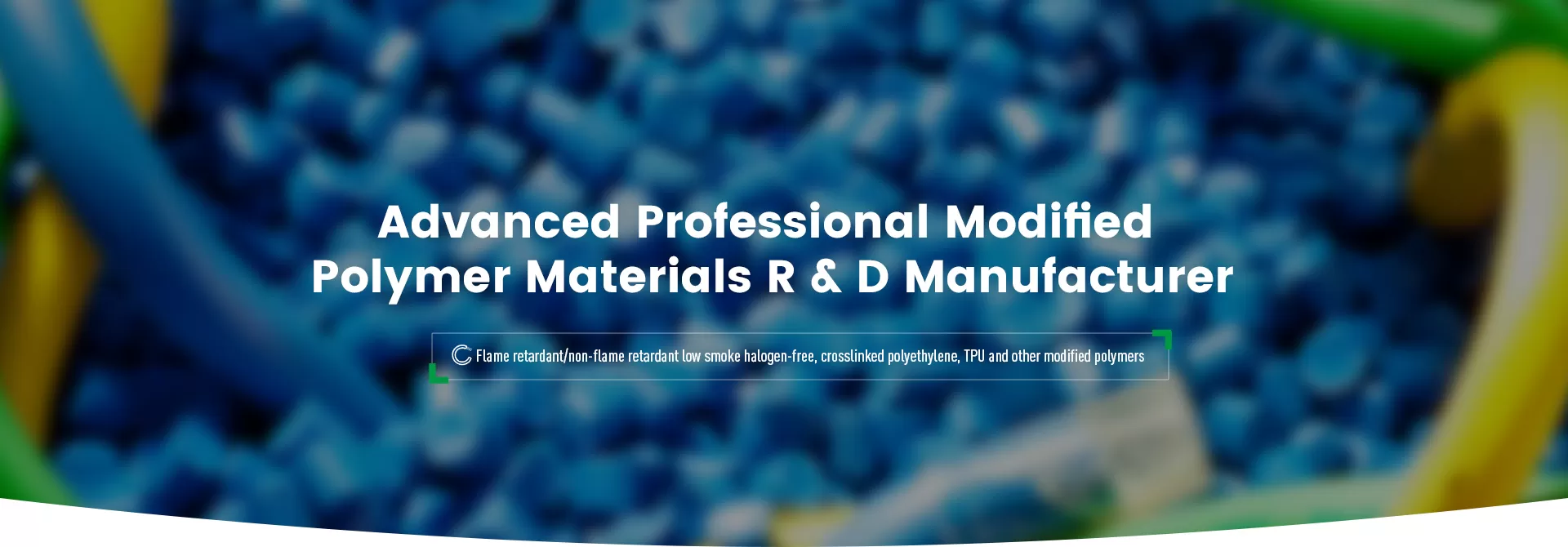
Product Description
This product is made of polymer resin as the base material, with halogen-free flame retardant, cross-linking agent, antioxidant and other additives added through mixed plasticization and granulation. It does not contain harmful substances such as heavy metals, and has excellent mechanical properties, electrical properties and wide processing temperature margin.
Application Field
Suitable for photovoltaic cable sheath materials that meet the waterproof performance indicators in EN 50618:2014, IEC 62930, and 2PFG2750.
Product Parameters
| Testing items | VALUE | Typicalval | UNIT | Method |
| Density(20℃) | -- | 1.35 | g/cm3 | GB/T 1033 |
| Tensile strength | ≥10 | 13.5 | MPa | GB/T 1040.2 |
| Elongation at break | ≥250 | 320 | % | GB/T 1040.2 |
| Hot extension 250℃,0.2Mpa,15min | ||||
| The elongation rate under load | ≤100 | 40 | % | \ |
| Permanent rate of change after cooling | ≤15 | 0 | % | \ |
| Heat deterioration 150±2℃,168h | ||||
| Rate of change in the tensile strength | ≤±30 | 14 | % | GB/T 2951.12 |
| Rate of change of fracture elongation | ≤±30 | -12 | % | GB/T 2951.12 |
| Impact brittlement temperature(-40 ºC) | ≤15/30 | 0/30 | 个/PCS | GB/T 5470 |
| Volumeresistivity(20ºC) | ≥1.0×1012 | 2.5×1012 | Ω·m | GB/T 1410 |
| Volumeresistivity(90ºC) | ≥1.0×109 | 1.2×109 | Ω·m | GB/T 1410 |
| Dielectric strength(20ºC) | ≥20 | 30 | MV/m | GB/T 1408.1 |
| Water resistance AD8 | ||||
| Tensile strength after 100 days of immersion in water | ≥7 | 8.5 | MPa | GB/T 1040.2 |
| The rate of change in tensile strength after 28/100 days ofimmersion | ≤±15 | -10 | % | GB/T 2951.12 |
| Elongation at break after 100 days of immersion in water | ≥200 | 258 | % | GB/T 1040.2 |
| The rate of change ofelongation at break after 28/100 days of immersion | ≤±20 | -16 | % | GB/T 2951.12 |
| Resistant to damp heat 90℃ Relative humidity 85%,1000h | ||||
| Rate of change in the tensile strength | ≤-30 | -19 | % | EN60068-2-78 |
| Rate of change of fracture elongation | ≤-30 | -20 | % | EN60068-2-78 |
| HCl and HBr gas releases | ≤2 | 0 | mg/g | GB/T17650 |
| Combustion gas PH | ≥4.3 | 5.9 | / | GB/T17650 |
| Combustion gas conductivity | ≤10 | 4 | μs/mm | GB/T17650 |
| LOI | ≥28 | 30 | % | GB/T2406 |
| Weather/UV resistance test 720h(360loops) | ||||
| Tensile strength retention | ≥70 | 85 | % | EN 50618:2014 appendix E |
| Elongation at break retention | ≥70 | 88 | % | EN 50618:2014 appendix E |
| Ozone resistant 25±2℃,24H Ozone concentration (250-300)×10-4% | ||||
| / | No cracking | No cracking | / | IEC 60811-403 |
Low-smoke halogen-free waterproof photovoltaic cable materials are specially designed for photovoltaic systems and have excellent high and low temperature resistance, UV radiation resistance, waterproof, salt spray resistance, weak acid and alkali resistance, aging resistance and flame retardant properties. These materials are usually based on polyolefin matrix resins, with flame retardants such as hydroxides added, and a variety of additives added to improve processing performance and performance. They can meet the long-term use of photovoltaic cables under harsh climatic conditions, such as high temperature, UV exposure and humid environment.
The insulation and sheath materials of photovoltaic cables usually use low-smoke halogen-free flame retardant polyolefins modified by radiation cross-linking. After radiation cross-linking, this material can provide good electrical and mechanical properties, while ensuring that the product is halogen-free, solving the problem of "secondary pollution" that may be generated during combustion. The characteristics of these cable materials include high flame retardancy, halogen-free, low toxins, no corrosive gas generation, high light transmittance and high protection against UV or water.
In photovoltaic systems, cable materials need to have good weather resistance, be able to maintain stable performance under extreme temperatures, and have good softness and high voltage resistance. The temperature resistance of photovoltaic cables usually requires that the conductor allows a long-term maximum operating temperature of 90°C and can withstand higher temperatures in short-circuit conditions, such as 120°C to 250°C, for no more than 5 seconds.
Waterproof performance is also important for photovoltaic cables, because photovoltaic systems are often installed outdoors and may be eroded by rain and other moisture. Therefore, the cable material needs to have excellent waterproof performance to protect the cable from moisture and ensure the long-term stable operation of the system.